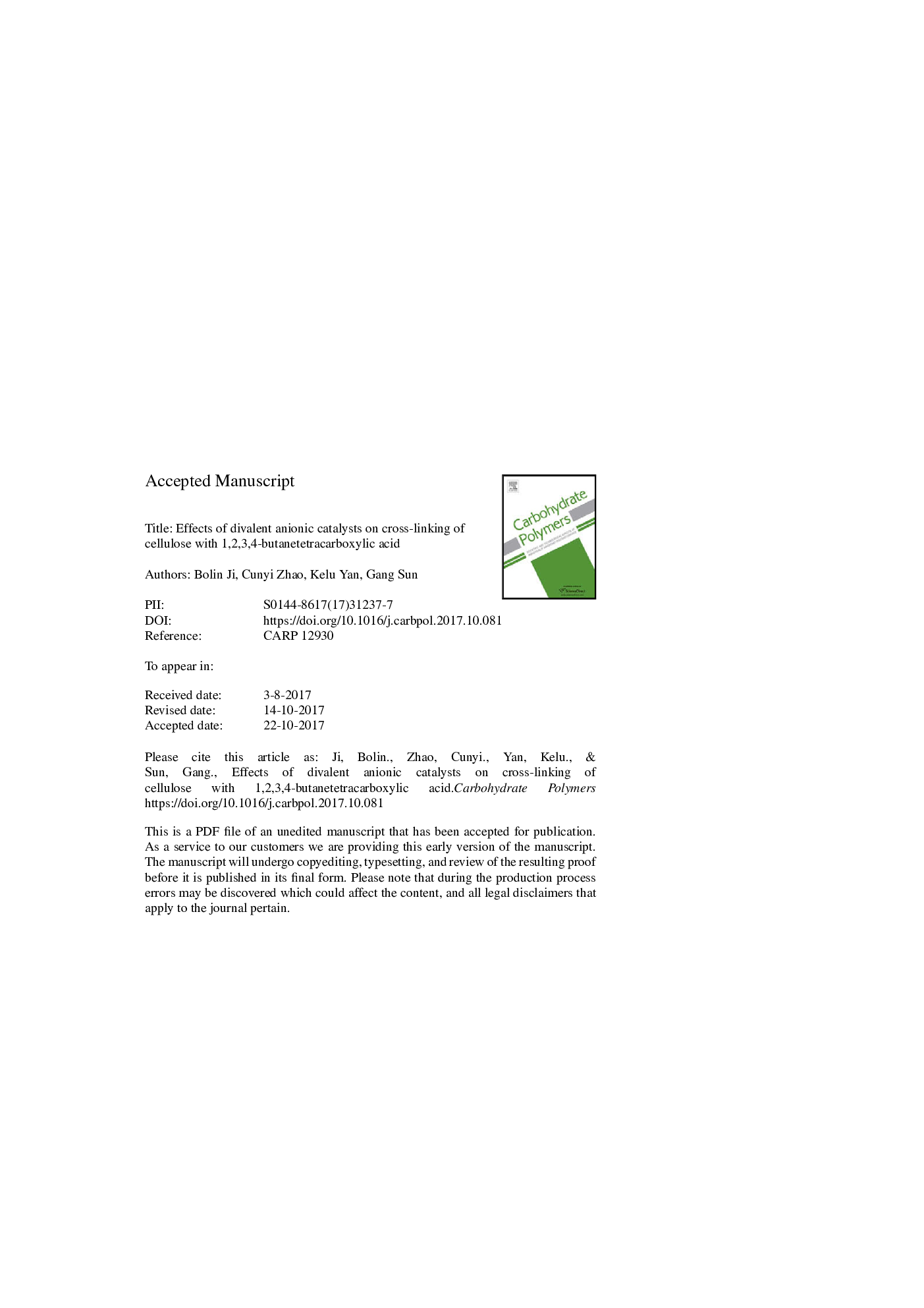| Article ID | Journal | Published Year | Pages | File Type |
|---|---|---|---|---|
| 7784490 | Carbohydrate Polymers | 2018 | 20 Pages |
Abstract
1,2,3,4-Butanetetracarboxylic acid (BTCA) can efficiently esterify cellulose with pyrophosphoric acid (PPA) as a catalyst to remove protons of reaction intermediates. However, valence and relative concentration ratio (RCR) of catalyst anions correlating to pH of finishing bath played a critical role in the reactions. Results here indicated that wrinkle recovery angle, tensile strength retention and ester absorbance of fabrics treated at pH of 2.8 showed higher values. It was a competing reaction for BTCA molecules to esterify or depolymerize cellulose. Importantly, divalent PPA anions were more efficient than monovalent ones in catalyzing the esterification between anhydrides and cellulose, which was confirmed by FTIR results and two-dimensional correlation spectroscopy analyses and by the RCRs of PPA anions and their changing rates versus pH. Furthermore, the higher catalytic efficiency of divalent anions was proved by the selected model catalysts. Meaningfully, the fabrics treated at pH â¤Â 3.2 presented good durability.
Keywords
Related Topics
Physical Sciences and Engineering
Chemistry
Organic Chemistry
Authors
Bolin Ji, Cunyi Zhao, Kelu Yan, Gang Sun,
